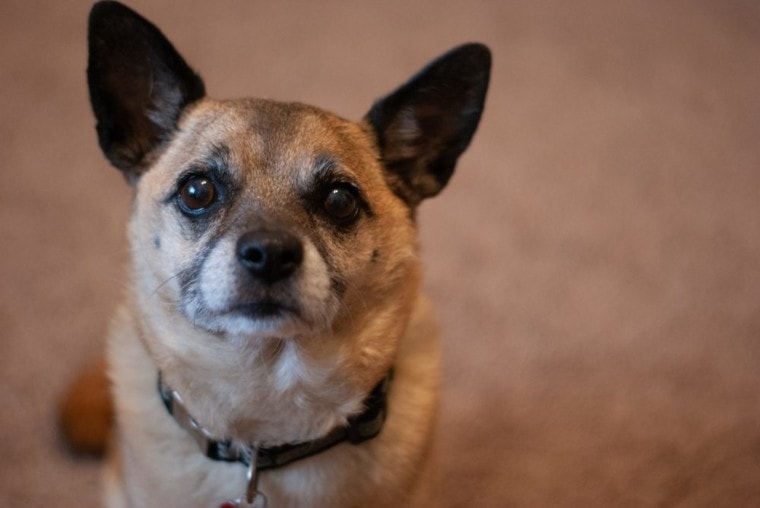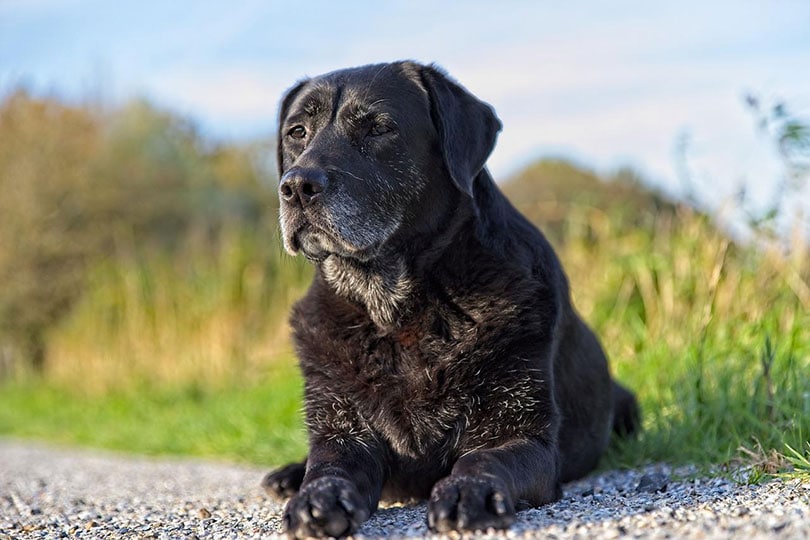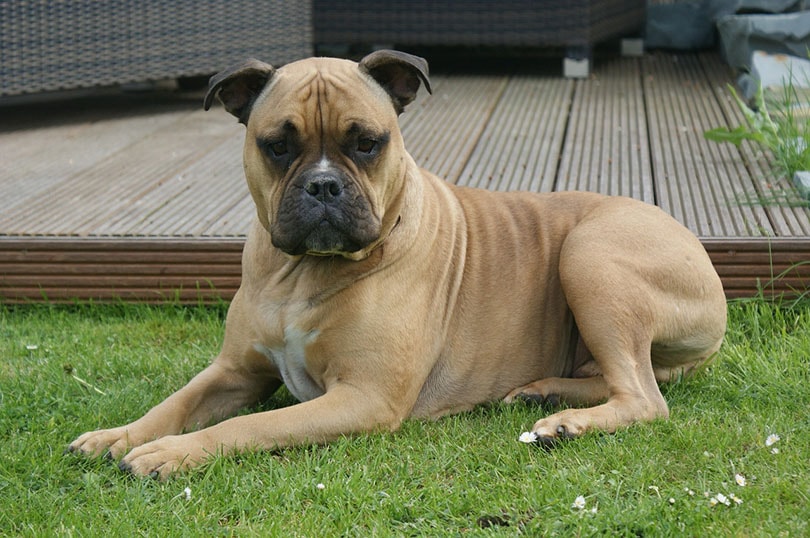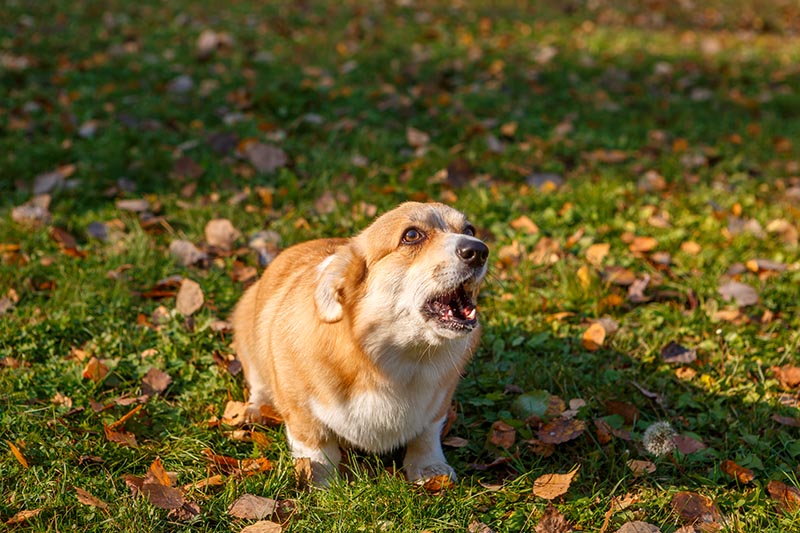
Although we hate to admit it, our pets growing older is an inevitable fact of life. As your dog gets on in years, there will certainly be changes to his body, mind, and behavior. While many of these changes are not necessarily indicative of a problem, monitoring any changes to your dog in case a problem arises is still important.
In this article, we have listed 10 common signs of aging that your dog may experience. If your dog is creeping ever closer to his older years, you can take a look at what you may expect in the near future.
The 10 Aging Changes in Dogs
1. Poor Vision or Clouded Eyes
Like humans, dogs may experience vision loss as they age. You may notice your dog bumping into objects or people more often. Likewise, your dog’s eyes may become cloudy, which is often a sign of cataracts or other eye conditions.
To help your dog through this period of poor vision, you can rely more heavily on his other, more important senses. Dogs have an excellent sense of smell, which you can use to your advantage by placing scent markers in critical areas around the house, such as the doors or his crate.
2. Bad Breath
Dogs of any age can have bad breath, but it can occur more suddenly in older dogs for different reasons. If your dog’s breath seems to turn awful out of nowhere, there is a chance that he has developed dental disease or gum disease.
As dogs grow older, their immune systems become weaker. This makes it harder for your dog to fight off infections, so dental issues and bad breath may become more common. Be sure to remain vigilant about your dog’s dental care as he grows older.

3. Trouble with Mobility and Speed
Mobility and speed will decrease with age. Elderly dogs may struggle with climbing up or down stairs, jumping in or out of a car, or even just walking around for prolonged periods of time. Old dogs will be much more inclined to sit and rest than participate in activities they once enjoyed. You may also notice that your dog’s hind legs are weaker than they used to be.
Arthritis could be the cause of mobility issues, so pay attention to signs such as stiffness, lameness, and limping.
4. Higher Frequency of Lumps and Bumps
Lumps and bumps are not necessarily a troubling occurrence for elderly dogs, and they can become much more common with age. Benign lipomas are common and generally harmless. Some vets will even recommend carefully monitoring the lipoma rather than removing it.
Still, it would be best if you took your dog to the vet anytime you notice a new growth. There is always a chance that it is a malignant tumor; if that is the case, you will want to treat it as soon as possible.
5. Weight Change
Gaining weight is relatively common among elderly dogs. Senior dogs are less active, making it harder to maintain a healthy weight. An excellent way to help your dog with his weight is to feed him senior-specific diets and take him swimming, which is a healthy yet low-impact activity.
However, if your dog begins to lose weight, it may be a cause for concern. If your dog is losing muscle weight, it could be caused by poor nutrient absorption or a gastrointestinal complication. If your dog loses a significant amount of weight, consult your vet for their opinion and advice.

6. Potty Problems
Incontinence, or a potty problem, is uncommon in elderly dogs. Medication can help your dog with this issue, so don’t be afraid to talk to your vet.
However, you should rule out the possibility of a medical condition first. There is a chance that your dog’s potty problems are caused by a urinary tract infection or kidney disease. Before assuming that your dog’s issues are simply due to age, verify that there is no underlying medical issue.
7. Behavioral Changes
While physical changes may be the most noticeable differences in your aging dog, they are not the only changes that may occur. You may notice behavioral changes as your dog ages, such as a shift in personality or a change in his sleeping schedule.
For instance, your dog may not have the same lively personality that he used to, and he may sleep much more often. This is pretty normal. However, behavioral changes can also occur due to illness or pain, so be sure to rule out the possibility of any health concern that may be causing your dog’s shift in behavior.
8. Cognitive Decline
A sad reality of aging is the possibility of cognitive decline. The older your dog gets, the more he may experience disorientation, confusion, and restlessness. You may notice your dog staring blankly at nothing, not recognizing familiar faces, or forgetting about his routines and training.
Your dog may pace during the night and bark or whine often. There may be other changes in behavior, such as poor grooming, a change in personality, or a loss of appetite.
If your dog is experiencing cognitive decline, he will need treatment and extra help around the house. You can reach out to your vet to construct a helpful care plan and reposition any furniture or equipment in your home to make it easier for your pet to move around.

9. Thinning of Skin and Coat
A dog’s coat and skin can grow thinner with age, often around the mouth and eyes. As the skin grows weaker, your dog will also be more susceptible to injuries and infections. You will want to be extra gentle with your dog during this time.
Although the thinning of the coat is a common sign of aging, it can also indicate a nutrient deficiency. If your dog lacks the necessary fatty acids in his diet, his coat may be malnourished. Adding more fatty acids to his diet can help restore his coat’s shine and strength.
10. Changing Paws
Even your dog’s beloved toe beans may change with age. But thankfully, not by much. Your dog’s paw pads may become thicker with age, while his nails may become more brittle. Extra care will be needed when clipping your dog’s nails due to their fragility.
Also, you should clip your dog’s nails more frequently as he ages since he will be less likely to naturally wear down his nails.
In Conclusion
While changes in your dog are inevitable as he grows older, they still need to be closely monitored. If there are any notable differences, bring your observations to your vet so that they can determine whether there is a medical issue behind these changes. Otherwise, continue to care for your elderly dog to the best of your ability. We all want what is best for our dogs, and that means ensuring their golden years are as comfortable and enjoyable as possible.
Featured Image Credit: Cori Cornejo, Shutterstock







